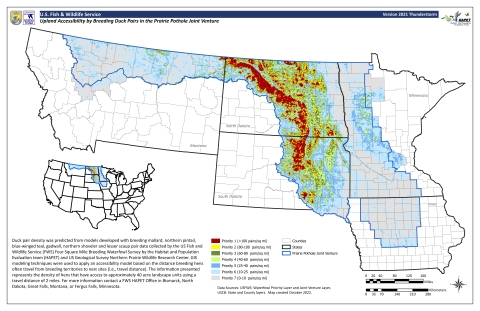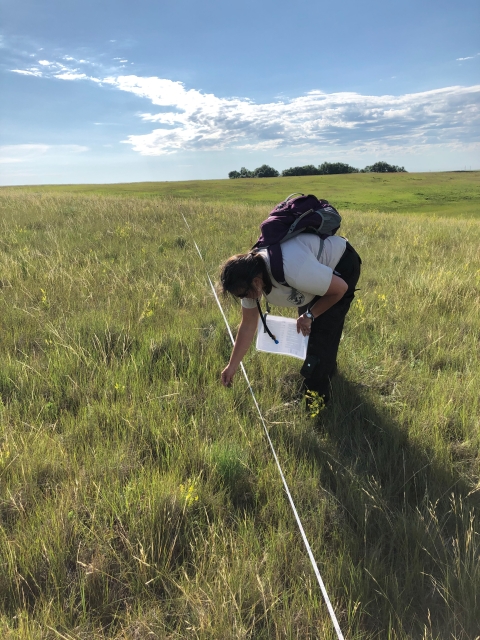Projects and Research
Four-Square-Mile Survey
The purpose of the Four-Square-Mile Survey (FSMS) is to estimate the impacts of National Wildlife Refuge System lands on waterfowl breeding populations and production in the U.S. Prairie Pothole Region.
Each year, more than 100 cooperators from 25 participating U.S. Fish and Wildlife Service (USFWS) Wetland Management Districts conduct waterfowl surveys on sample wetlands within four square mile plots during two counts.
The first count occurs from May 1 to May 15, and the second from May 20 to June 5. Aerial photography is also collected at each plot to assess the wet area of all wetland basins within the plot boundaries.
Field observations and aerial photography collected for the FSMS are used to develop models and decision-support tools that help improve waterfowl management. The breeding waterfowl upland accessibility map (commonly referred to as the “Thunderstorm Map”) is derived from FSMS data and illustrates the accessibility of upland nesting habitat to breeding hens. The USFWS realty program uses these and other tools to help identify priority areas for the acquisition of Waterfowl Production Areas and conservation easements.
Native Prairie Adaptive Management
The Native Prairie Adaptive Management (NPAM) program is a decision framework that was developed to address the degradation of native prairies caused by invasion of cool-season introduced grasses.
Participating management units occur across four states in the Northern Great Plans, averaging about 120 management units per year. Prairies enrolled in the NPAM program receive an annual management recommendation that is in part a result of the current state of the participating prairie units.
Management actions include resting, prescribed burning, grazing, or a combination of burning and grazing.
After the management is implemented, staff conduct vegetation surveys using the belt transect method to monitor the effects of the actions. The data collected from vegetation surveys inform the NPAM decision framework and help improve the annual management recommendations.
NPAM helps us implement science-based management of our individual management units, while leveraging learning that is taking place across all enrolled units.


